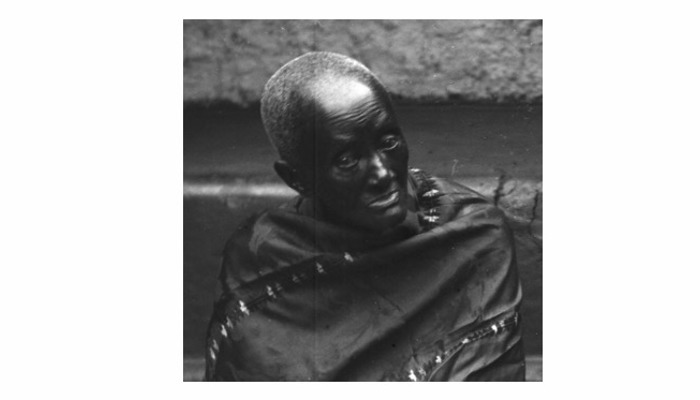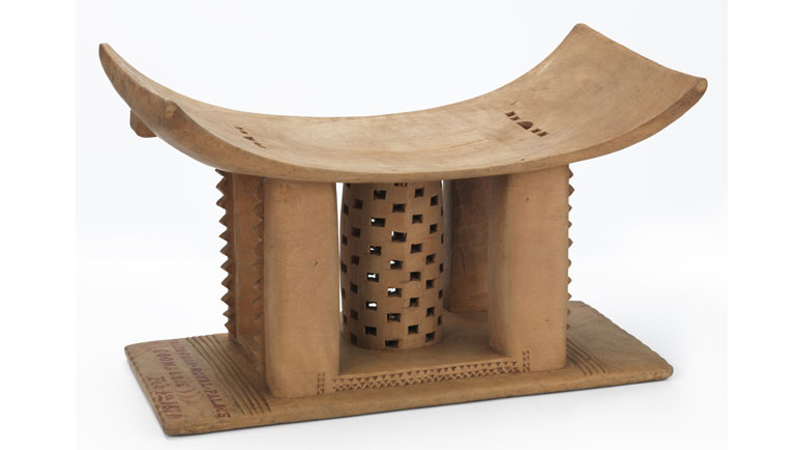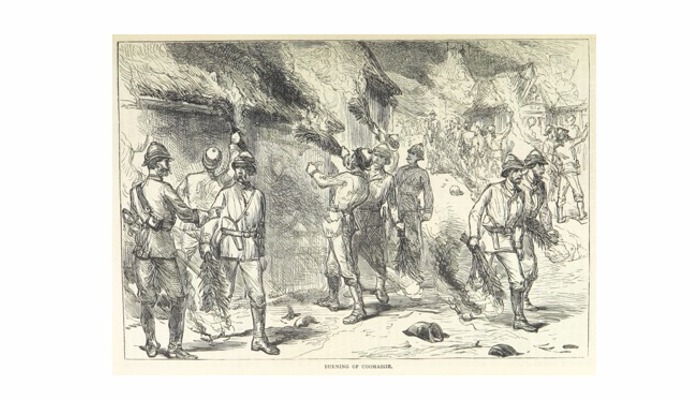
A Looted Royal Stool

Asante stool of Afua Kobi I, Asante queen-mother, 1857–1884, Royal Palace, Kumasi, Ghana, West Africa
1874.22
Images © CSG CIC Glasgow Museums Collection
21st January 2021
This stool was taken from the Asante Royal Palace of Kumasi by Brigadier General Sir Archibald Alison, on 4 February 1874, when he led part of the British Army’s invading force against the Asante people.
To the Asante, stools were sacred and symbolic, thought to contain the soul of its owner, and passed down through the generations. Asante stools are usually carved from asese wood (Funtumia africana) with an arched seat set over a foot, which is a symbol of wisdom. In Asante, every stool in use has its own particular significance and name that denote the gender, social status, or clan of its owner. The number and shape of the stool supports and the decorative motifs indicate the stool’s name.
This stool is of a type known as Mma’ gwa or woman’s stool. The Mma’ gwa has five supports, with the central support or sekyedua slightly rounded, a checkerboard motif known as dame dame piercing the central support only, and saw-toothed projections known as nkye kyewa along the four outer supports. The incised decorative motifs along the base indicate that this stool was used by a queen mother or Asantehemaa. This shape and the placement of incised design is commonly found on queen mothers’ stools and distinguishes the stool from an ordinary woman’s stool. As the stool was also found in the Royal Court it undoubtedly belonged to Afua Kobi I, the 9th Asantehemaa from 1857 to 1883.
Images


Afua Kobi I was extremely active in the Asante Court and a shrewd politician. Although she spoke out against war with the British, and in 1873 warned her son and the council of military chiefs that such a conflict would destroy their empire, in 1872 her response to the British governor was, ‘I am only a woman, but would fight the governor with my left hand.’
The Second Anglo-Asante War, also known by the British as the First Asante Expedition, lasted from 1873 to 1874. The British Gold Coast was formally established in 1867, and in 1872, Britain expanded their territory by purchasing the Dutch Gold Coast from the Dutch, who had signed a treaty in 1656 with the local Asante people. The treaty’s arrangements regulated Dutch-Asante diplomatic affairs for more than 213 years.
This all changed with the sale of the Dutch Gold Coast to the British. The Asante invaded the new British protectorate. The British sent General Garnet Wolseley, with several thousand troops, to command the Punitive Expedition against the Asante. Early in the morning of 4 February 1874, the British Punitive Expedition Force entered Kumasi. The British demolished the royal palace with explosives, leaving Kumasi a heap of smouldering ruins.
On the 6th of February after sacking and burning the city, the British pulled out and marched back to the coast with their loot. Sir Archibald Alison, who was the field officer in command of the British troops, or one of his men, looted the royal stool of the 9th Asantehemaa from the palace and donated it as a war trophy to Kelvingrove Museum a month after the destruction of the palace. This was welcomed by the newly formed museum, which had started to collect material from Africa as soon as it was established in 1870.
Pat Allan,
Curator of World Cultures
